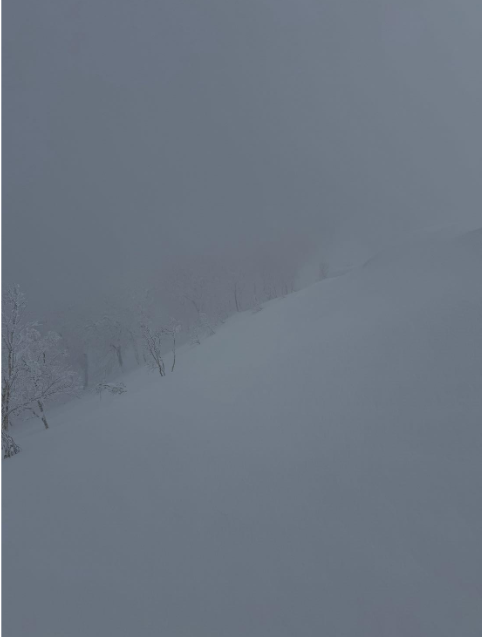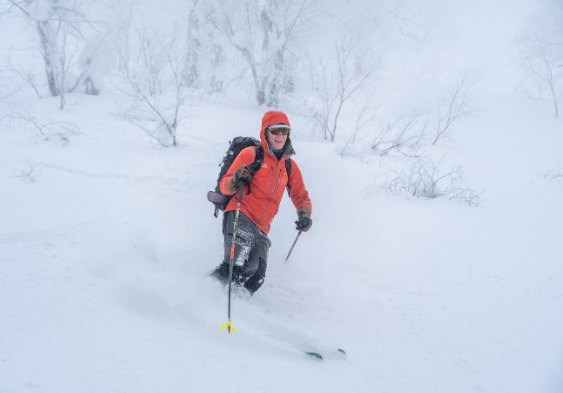Ski touring trip Japan
- wdoerig
- Sep 4
- 5 min read
From the wild Japanese Alps to the northern island of Hokkaido
A long-held wish comes true.
Finally, experience Japan, lots of snow, excellent cuisine and friendly people.
It starts at the end of January: from Munich to Tokyo, where I am already being
Friend and mountain guide is expected.
We continue by train to Nagano. There, we rent a car to drive to the Hakuba Valley and reach our base for the next week.

I am impressed by the masses of snow that greet us on both sides of the road as we head into the valley.
This is going to be quite a struggle to track, I think.

First, we move into our accommodation, settle in, and rest a little from the long journey before heading to a Japanese dinner and an early night.
Japanese food is fantastic: lots of vegetables, fish, meat, and little fat. For breakfast, you'll find soup, salad, and vegetables; bread is secondary.

Finally, the first ski tour in Japan.
But overnight, another 30 cm of fresh snow fell. The sky is grey, and it
Snow continues. It's expected to stay that way for the next few days.
At least I now know that the masses of snow with long periods of bad weather
accompany.

Nevertheless, we want to go through with our plan.
All we can do is blaze trails upwards near ski resorts, sheltered by forests. Thick fog and storms loom over the open terrain, making it pointless to attempt to reach a summit. The lifts are also operating at reduced capacity, only at lower altitudes.
Skiing in these fresh snow masses is no fun; we usually opt for the nearby slopes



After 3 days of hard work and freezing, we move on to Matsumoto, where we spend the night so we can easily catch the early flight to Sapporo.
We hope to find more favorable conditions 800km further north.
We rent a vehicle again and travel through beautiful, snowy landscapes to Niseco, where we will stay for the next few days.
The weather will probably be colder, but still much friendlier. We hope to finally have some nice tours in
to enjoy Japan.
What surprises us are the prices for food; they have at least tripled between Nagano and Sapporo. If the weather finally improves, we'll accept it.

Early the next day we start towards the volcano Mt. Yotei, because at 11 am we are already in Niseco
bad weather is forecast again.
We follow a pleasant trail through beautiful birch forests, but it soon ends.
The group the day before us turned back without accomplishing anything because of the weather.

We follow the trail through increasingly sparse forests towards the summit.
As is often the case with volcanoes, you think the summit is within reach, but it is still a long way away.
We battle our way through increasingly steep terrain and drifting powder snow. Often
we easily slip on snow-covered, invisible birch bushes.

We can already see the clouds coming from the east-southeast, which will soon cover us with fog.
Strong winds at around -20° Celsius require a lot of willpower.
We reach the summit and decide to take off our skins and return as quickly as possible.

Following our ascent trail, we find our way through the drifting snow until we reach below the cloud cover and are rewarded with increasingly even powder snow; a descent that's sure to delight. The sun even makes a brief appearance, illuminating the snowy landscape amidst the steep birch forests like sparkling diamonds.

We can hardly get enough of the turns in the cold powder snow until we reach the base of the volcano and descend through gently sloping terrain in our ascent track back to the starting point.
What a joy, it finally worked.
The following days it snows continuously here too. Rarely can you catch a glimpse of the sun
guess.
Because of the strong winds above 700 meters, we're forced to stay in the shelter of the forest. Higher up, the fog is so thick and the icy wind so strong that ski touring becomes an exercise in endurance.

In addition, the wind sweeps the fresh snow away from the icy ground, forming avalanches and barely navigable passages in which you simply get stuck.
So we decide to climb at a low altitude in the protection of the forest, ski down and climb again until we have accumulated the altitude that constitutes a ski tour for us.
After all, slaloming around the trees in the light, deep powder snow is great fun.

I've slowly gotten used to the country's conditions and can definitely appreciate this new type of ski touring.
By the way, the food outside the ski resort has the same moderate prices that we found in the Hakuba Valley near Nagano.
Hotel rooms in Japan are very cramped: hardly any space to dry things, and
Wet rooms are similar to toilets in airplanes.
At least everywhere we go, shower toilets are installed; even in public facilities.
After 4 days of powder snow and many short runs, we move on.
By rental car it takes about 4 hours through the city of Sapporo with almost 2 million
residents to Asahikawa, where the snow is said to be even lighter.
We take up residence in the middle of the city, which is small by Asian standards, with around 350,000
residents and want to take various tours from there, each about an hour's drive away.
The first tour takes us to the active volcano Asahi-dake, the highest mountain on the island
Hokkaido.
The weather, bitterly cold, light snowfall from an almost clear sky.
We park in the parking lot of the disused cable car and follow the Ratrac track to the cable car's mountain station, where the wind almost blows us away again.
Reaching the summit of the volcano is pointless in these conditions.
We set off immediately and try not to sink into the snowdrifts.
This is the first time I've experienced such light powder snow as in the wind-protected areas; truly fantastic.


The Ratrac trail, now full of snowshoe hikers, ski tourists and pedestrians.
We eat and drink a little something in the restaurant at the valley station and decide to climb the 500 meters again.

It seems to be the same here as we've experienced every day. The wind picks up around midday. We quickly change gear at the mountain station, depart, and warm up again in the restaurant before returning to Asahikawa.
The following days we climb hills of around 800 meters in height to escape the icy wind
escape.
After all, the starting point is always around 200 meters above sea level, so even with two ascents, we manage to put together quite decent tours. The descents are fantastic, despite the cold, fog, and snowfall; the drifting powder snow outweighs all the disadvantages.
And the bindings:
After 12 ski tours in Japan with mostly double ascents and frontal falls due to
Snow drifts or hidden pine bushes, no incidents have occurred.

It is comfortable to make tracks in fresh snow without climbing aids directly on the footplate of the stopper.
The studs between the heel of the shoe and the tread plates are always diverted outwards after a few steps.

The bindings release perfectly.
Unfortunately, after getting used to the Japanese weather conditions, we have to
start our journey home; but I think we'll be back.



